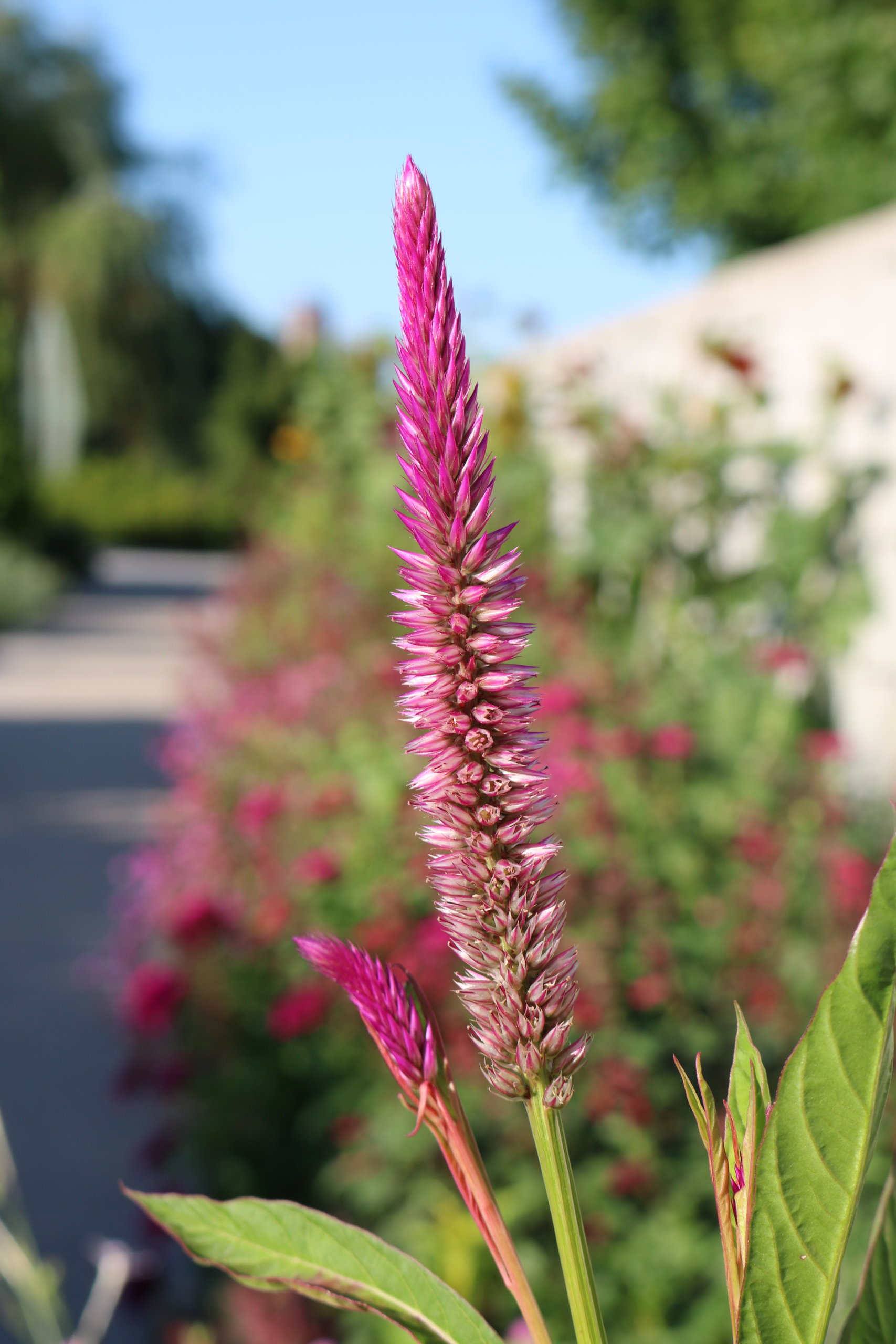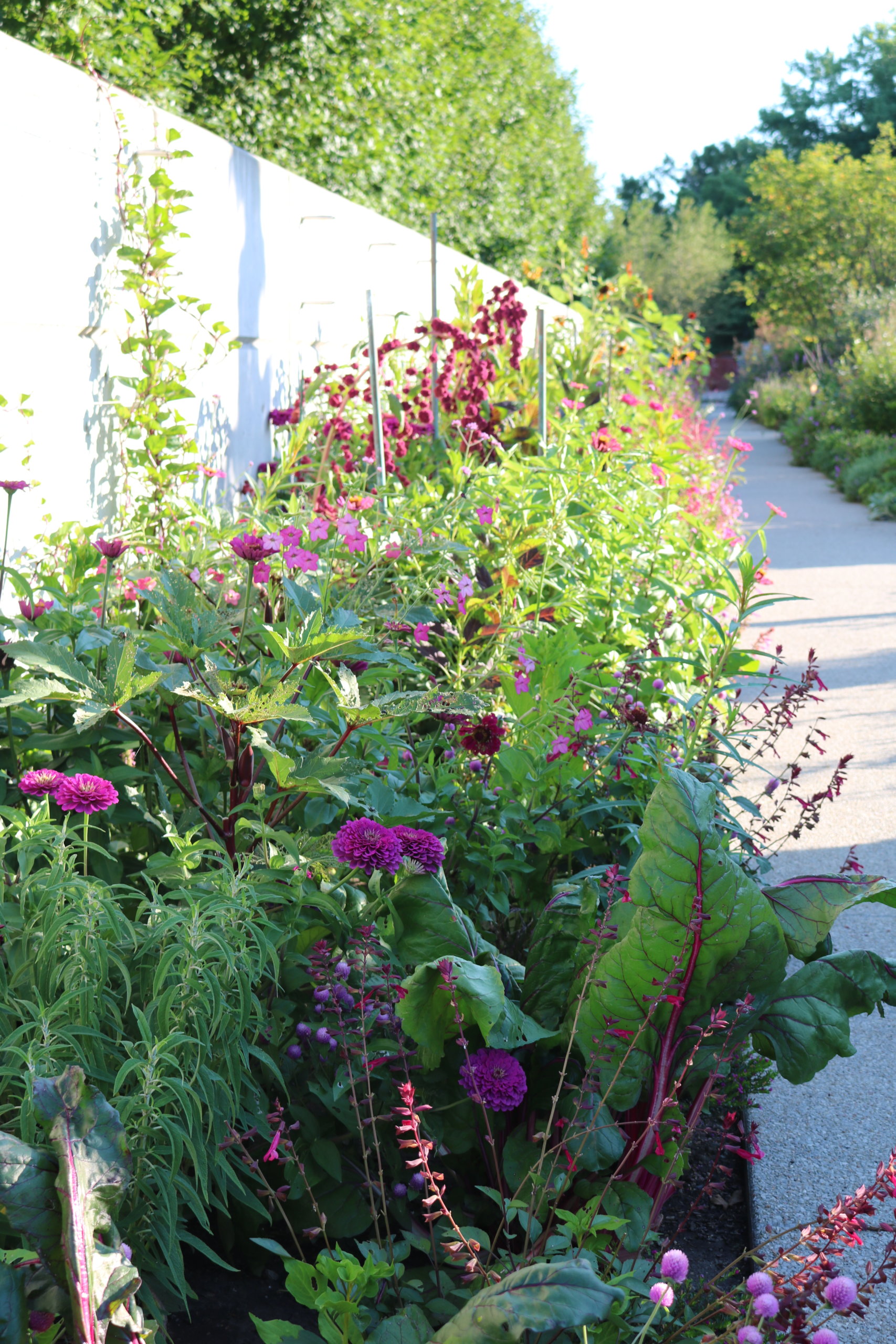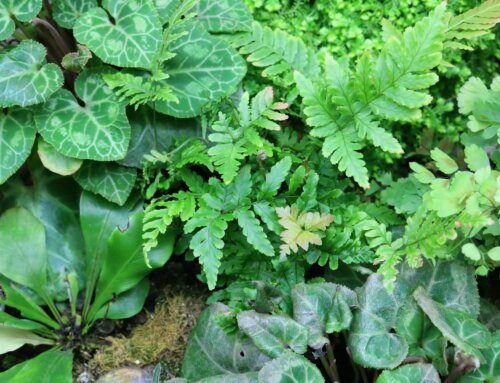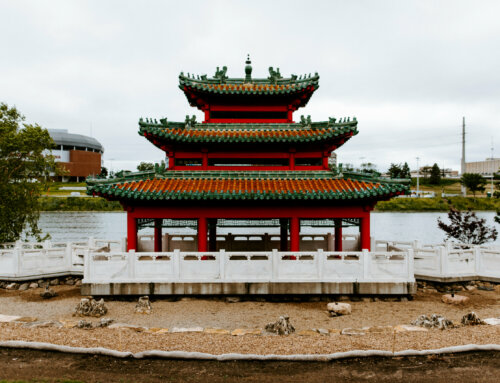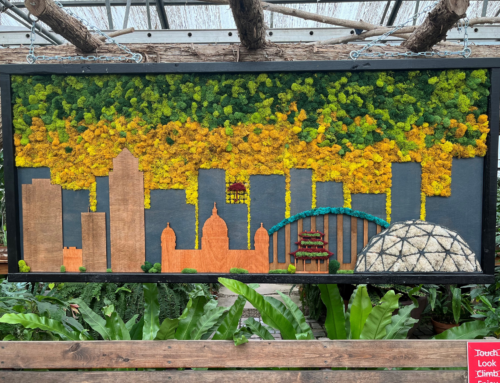Garden Design with Senior Horticulturist Leslie Hunter
Although designing annual gardens is a creative process, I have a clear framework that I follow each time. These are the four steps I use to create dynamic garden spaces that will generate interest throughout the season.
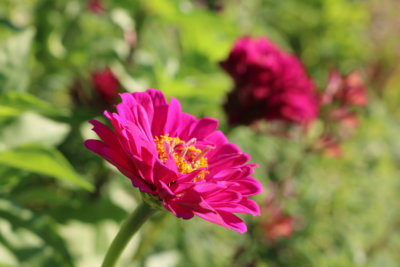
1. Determine a Theme
The first step is to start with an overall theme. As with any planting, creating an anchor, such as a consistent plant, color scheme or another element, offers a starting point that everything can build around.
For example, this year in the Koehn Garden’s annual border, I had two theme ideas: I wanted to continue the Pantone color theme from spring using shades of pink, and I also wanted to use plenty of dahlias for structure. I combined these two themes to kick off and influence the rest of the design.
2. Choose Plants that Will Complement the Theme
Next, consider multiple plant elements and features that will flow with—and showcase—the theme(s) you have chosen. Here is the specific list I reference when selecting companion plants:
- Color
- Height
- Bloom time
- Shape of the flowers (such as spike, umbel or daisy)
- Color of the foliage (such as dark or variegated)
- Overall texture of the plant (such as coarse, fine or frothy)
You don’t need to take every single element into consideration—this is your design! However, picking a few to focus on will ensure you have a variety of timing and visual elements that will keep the planting balanced and interesting throughout the growing season.
3. Create Designs that are Dynamic Without Color
I once heard that successful garden design should be appealing without color, such as in a black and white photo. I keep this in mind as I create, and this helps make sure I’m satisfied with the arrangement of shapes, heights and textures. The color itself is an added bonus.
4. Incorporate Uncommon or Unexpected Species
Once I have determined my desired shapes, heights and textures, I work to find additional plants that are new to the market or atypical for use in annual designs, such as vegetables—or sometimes even perennials! Some of my combinations work even better than I imagined, and some of them are plant fails, like the time a woodchuck destroyed all my okra plants.
For me, the design process of collecting and applying multiple concepts into one planting is fun, but watching that space grow and unfold throughout the season is the best part.


